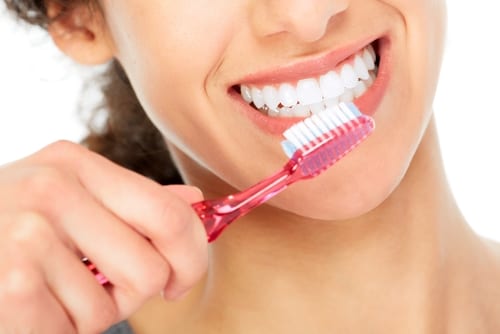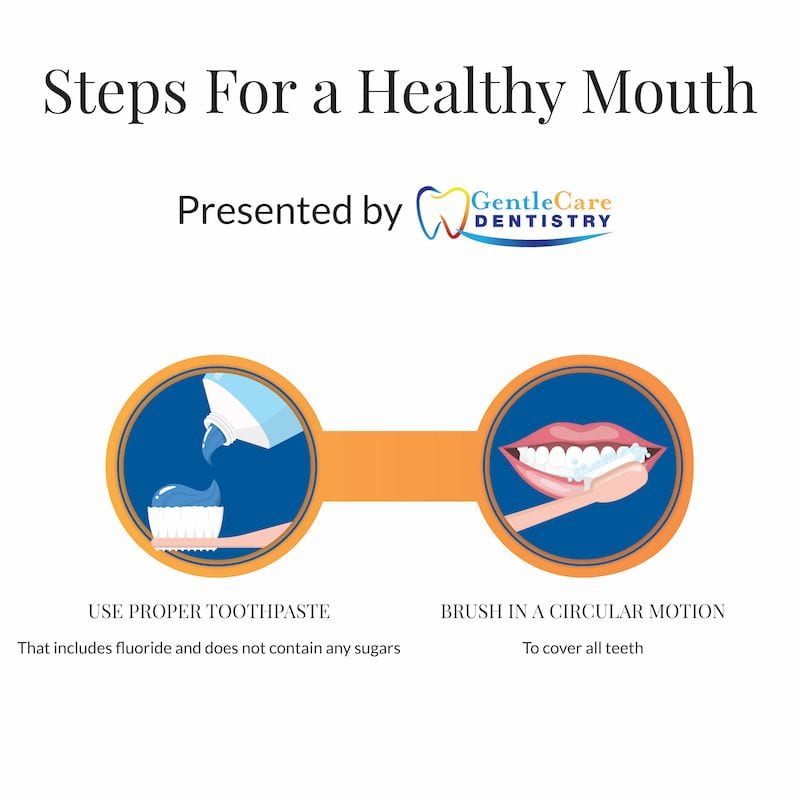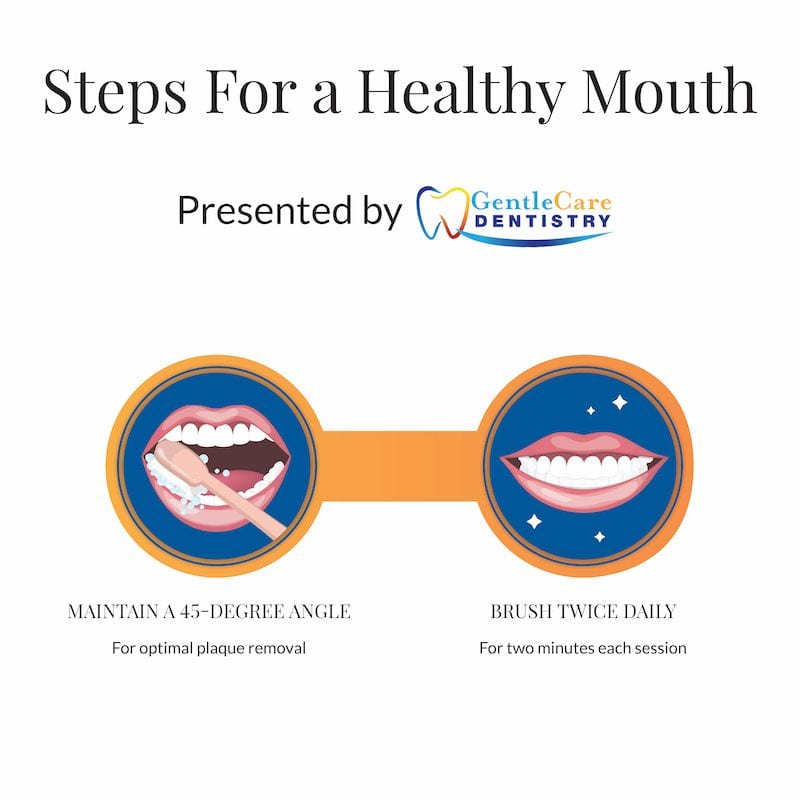Posted October 07, 2019 in Oral Hygiene
Brushing your teeth is important. There is virtually no one who would dispute that claim. But just because you are moving the bristles around your teeth doesn’t mean you are brushing your teeth properly. Proper brushing technique isn’t exactly something that anyone teaches you either.
To help you make sure you are getting the most out of the time you are spending in front of the sink, we have compiled a list of 11 ways to perfect your brushing technique.
1. Brush Twice a Day

A woman maintaining a 45-degree toothbrush angle as she brushes her teeth for a minimum of two minutes
After a long day, all the food you have eaten is decaying between your teeth, so removing that decay before you all asleep is essential.
After sleeping for a full night, the bacteria in your mouth have had plenty of undisturbed time to grow, so ridding yourself of that bacteria is equally important.
Skipping either of these brushing sessions means that you are drastically increasing the likelihood of developing a cavity or infection.
2. Two Minutes Per Session
This is the length of time to shoot for when brushing your teeth. Two minutes may seem like a long time to commit to cleaning your teeth, especially when you are in a hurry, but making sure you are reaching every part of the mouth per session is as important as making time for the session itself.
3. Use a Soft-Bristled Brush
The point of brushing isn’t to sandpaper away plaque and tartar with a rigid brush, which can ultimately cause permanent damage to the gums and enamel.
The goal is to gently loosen the material that has accumulated in all the nooks and crannies between the teeth over the course of the two-minute session.
Using a soft-bristled brush will do the job, and it will also protect your gums from being hurt in the process.
4. Make Sure Your Brush Fits
This is especially relevant when trying to get children to build healthy dental hygiene habits. A brush that is too big for your mouth will be uncomfortable and bulky when you are trying to maneuver through your teeth. Find an appropriately sized brush for your dentition.
5. Replace Your Toothbrush Often
We recommend getting a new toothbrush every three months. If you are rough on your brush (which you shouldn’t be) or if the brush you have is showing wear, replace it as soon as it frays around the edges. A frayed brush will not do much to remove bacteria from the mouth.
6. Use Proper Toothpaste
A toothbrush’s best friend is the toothpaste that accompanies it. The American Dental Association (ADA) recommends using fluoride toothpaste.
Looking for the ADA seal is a good way to gauge a product’s quality since any product that can contribute to tooth decay (e.g. sugar) will prevent an ADA seal.
7. Hit the Right Angle
Keeping your toothbrush at a 45-degree angle relative to your teeth is the ideal position to maximize the removal of bacteria, plaque, and leftover food from your mouth.
8. Use the Right Motion
Try to avoid brushing your teeth in a back-and-forth motion. The most effective pattern to follow is a circle since it will move the particles both horizontally and vertically between the teeth. Linear brushing can also cause unnecessary damage to the gums and enamel.
9. Cover All Surfaces
Make sure you are consciously brushing the front, back, and chewing surfaces of your teeth during your two-minute session.
Otherwise, you will probably miss more than one section of your teeth. It is equally important to make sure you are brushing the top of your tongue since it can also harbor bacteria.
10. Floss, Floss, Floss
While brushing your teeth will loosen most of the surface plaque on your teeth, the only way to make sure you are getting into the tightest corners of the mouth is to floss at least once per day.
Flossing removes buildup from the spaces beneath the teeth and is essential to preventing the development of cavities and infections.
11. Eat a Balanced Diet
Rather than grabbing that bag of sugary, chewy candy that will get stuck between your teeth and cause decay, opt instead for something with less sugar and a more fibrous texture, like a piece of celery or carrots. Minimizing the sugar intake will work wonders for your dental health.
Bonus Tip: Visit Your Dentist
Even the best brushers still need to make regular trips to the dentist to make sure there are no new developments in their dentition.
Sometimes, even when we think we are taking proper care of our mouths, we may miss certain areas without noticing. In these cases, only a qualified dental care expert can help resolve your problems.
Have More Questions?
If you would like more information about toothbrushing strategies or would like to schedule a consultation with one of our dental professionals, call us at 575-524-3722.